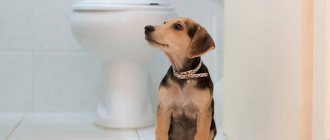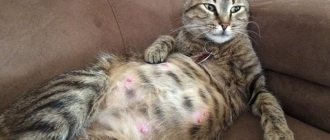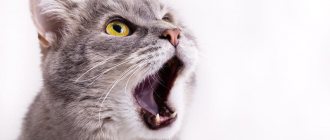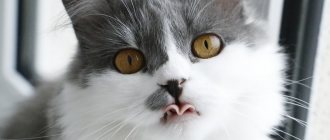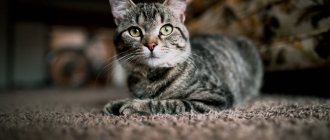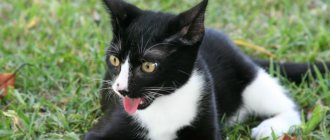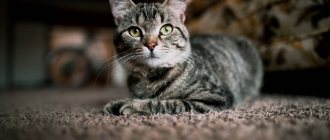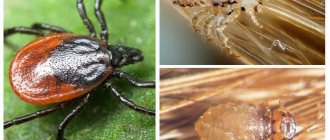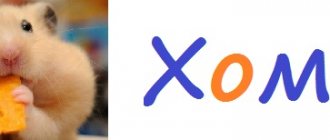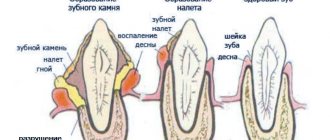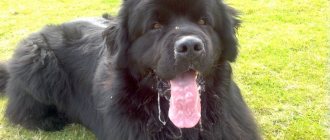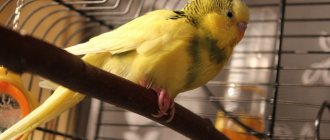It is normal for birds to clean their plumage frequently. This is how they maintain the purity and balance of parasites on the body. But if a budgie is constantly itching, this indicates the presence of various diseases. Unfortunately, there are many reasons for this behavior, and their manifestations can be similar. Therefore, it is worth analyzing why the parrot itches and identifying all possible diseases that cause such symptoms.
Natural causes
Don’t panic right away if the wavy fish suddenly starts cleaning itself more often. There are a number of harmless reasons for this.
Shedding
When healthy, birds have dense plumage, which allows them to control heat exchange. To ensure that it always looks good and performs its functions, most birds molt periodically. This is a natural process that does not require intervention from the owner.
In budgerigars, the first molt occurs at the age of 3 months. This period usually lasts about a month. But the first moult can last 2 months.
Birds normally shed a small amount of down each day, and sometimes feathers fall out. During molting, their number increases significantly. First the fluff falls off. This process is highly organized, as evidenced by the pairwise loss of tail and flight feathers. It is worth remembering that the process is accompanied by a rapid metabolism, so the pet needs a properly balanced diet and vitamin supplements.
During this period, the parrot rubs its head or other parts of its body against a perch or cage. He loves to swim, so he needs to be provided with plenty of water and changed regularly.
Down and feathers fall out gradually, but a new covering immediately begins to grow in their place. During normal molting, no bald patches should be visible on the body. If a naked body is visible, there may be a different reason. It is worth observing the behavior of your pet at this time; if he does not just comb out the feathers, but pulls them out, he suffers from a lack of vitamins or an excess of parasites. Both cases require treatment.
Hygiene
Birds need to constantly maintain cleanliness and tidiness. If a fluff is knocked out, the bird strives to immediately put it back, so it itches with its beak and runs its head along its back.
Parrots carry out the procedure of cleaning and laying their cover regularly every day. It is accompanied by a slight loss of small fluff. Only a small amount accumulates at the bottom of the cell over a few days. At the same time, the parrot does not itch all the time, but only for a short time. If it shakes and itches frequently, this indicates a problem.
How to care for a parrot
Careful care and attention from the owners will help pet parrots to quietly endure the beginning of molting. Considering that during this delicate period, the immunity of feathered pets is significantly reduced, it is necessary to take a number of measures that will protect them from aggressive environmental influences and disease. Such preventive measures include:
- proper balanced nutrition, which will include a high content of beneficial vitamins and minerals;
- organization of walking - free flight around the apartment;
- water procedures;
- control of temperature and humidity in the room where the poultry is kept.
Nutrition during the molting period
During molting, the parrot needs to be fed better, since colossal reserves are spent on the growth of new plumage, and restoring their balance in the body is vital.
| Foods that must be included in the diet of a budgerigar are mandatory. | |||||
| Cereals; Seeds; Nuts; Sesame; | Fruits and berries, dried fruits from them | Vegetables | Greenery | Fermented milk feed | Animal feed |
| Canary seed; Meadow grass seeds; Bran, Special grain premixes “for shedding”. | Apples; Pears; Peaches; Bananas; Citrus; Melons; Cherries; Cherries; Apricots; Raspberries; Blackberry; Strawberry; Blueberry; Cowberry; Grape; Currant. | Carrot; Pumpkin; Zucchini; Cabbage; Cucumbers; Patissons. | Sprouted wheat and oats; Spinach; Dandelion; Plantain; Nettle; Carrot and beet tops; Celery; Chickweed; woodlouse; Shepherd's Purse; Tree branches. | Skimmed milk; Low-fat cottage cheese. | Mealworms; Bloodworm; Drosophila; Grasshoppers; May beetles; Eggs of chickens and quails. |
Vitamins and minerals
During the period of plumage change, the parrot's diet should contain the following minerals:
- meat and bone meal;
- calcium glycerophosphate;
- chalk;
- sand;
- sepia;
- feed sulfur;
- egg shells;
- crushed shells;
- crushed cuttlefish shell.
Preparations with a complex of vitamins are allowed to be given after the parrot is one year old.
Veterinarians recommend that during molting you pay attention to such vitamin mixtures as VitaCraft, VitaSol 8 in 1 UltraWhite, BifarMauser Trofen, BifarVinka, brewer's yeast with the addition of feed sulfur
Parrot bathing
In addition to the fact that there should always be drinking water in the parrot’s cage, he needs to have “bath” days. Budgerigars love to splash around in the water, and during the molting period such procedures are especially recommended, since bathing helps to quickly get rid of old feathers, relieve itching, and improve their mood. Wild parrots bathe in the rain or look for morning dew on tree leaves to “wash themselves.”
To bathe your pet budgie, you can simply turn on the tap and let your pet out of the cage for a walk under such a “shower”. You can use a small container the size of a soup plate, pour water at room temperature into it, and place the container in the bird’s cage. Sometimes there are individuals with a special disposition who do not really like the prospect of being a little “damaged.” They can simply be sprayed with water from a water gun or spray bottle.
Air humidity
As you know, the birthplace of budgerigars is tropical and equatorial regions with high humidity. Therefore, when breeding these birds at home, they need to recreate conditions as close to natural as possible.
The most favorable temperature range is +20C-+25C.
But the most important thing is to maintain humidity in the apartment - it should be more than 60%. With these parameters, the parrot will feel comfortable, and the molting period will pass quickly and painlessly.
Fungal diseases
Bird skin consists of dermis and epidermis. The dermis contains hair follicles and muscles. The epidermis consists of horny scales and a germ layer.
The epidermis is quite thin, dry, and does not contain sweat glands. Therefore, birds often develop various fungal diseases. This happens mainly due to poor nutrition or hygiene.
Skin dermatitis
Dermatitis is an acute inflammatory lesion of the skin. Accompanied by peeling and redness of the affected area of the skin. Easily detachable grey-yellow or brown crusts form in the affected areas.
The disease is aggravated by the fact that the budgie scratches the affected areas. Because of this, bleeding occurs. The fluff on the damaged areas sticks together from blood and secretions. At the first symptoms of skin dermatitis, you should consult a veterinarian.
Malassezia
This disease is caused by a yeast fungus of the genus Malessezia. This is one of the most common fungal infections among birds. It develops as a result of weakened immunity and poor nutrition. These fungi normally live on the bird’s body, and after the immune system is weakened, they begin to actively multiply, which leads to Malassezia.
It is characterized by severe itching, which is why the budgerigar often itches throughout the day. This leads to severe irritation of the skin, severe skin erosion, and local baldness.
Candidiasis
Candidiasis is caused by yeast fungi of the genus Candida. They are also pathogenic and are normally found on the skin. When the immune system is weakened, candida actively multiply and cause the disease candidiasis.
The parrot often itches and rubs its butt or other parts of the body only if the skin is affected by candidiasis. In this case, severe itching appears, which is accompanied by a white coating.
Warning signs
However, if your pet begins to itch more often than usual and unusual habits are added to its usual behavior, you should carefully examine the pet. In addition to scratching, symptoms that may indicate a bird disease include:
- Whitish, cloudy discharge from the eyes or wax.
- Feather loss.
- Change in color and consistency of droppings.
- Wounds on the body, formation of growths.
- Lethargy or restlessness.
- Drowsiness.
- Freezing in an unnatural position.
Any of the symptoms described is an alarming sign and requires immediate contact with a veterinarian.
Inflammatory processes in a pet’s body occur quite quickly, and the slightest delay reduces the chances of recovery.
Diseases that cause the most common scabies
How often the parrot itches and shakes its wings depends on the degree of development of the fungus. And if this illness leaves the pet alone for a while, then others will not give him freedom for a minute. This problem includes parasites.
Parasites
The most common parasites that cause persistent scabies are the following:
- down-eaters;
- lice;
- scabies mite;
- red tick
The most dangerous from this list are down-eaters. These are small insects of the order lice and lice. They settle on the bird's skin and plumage. They feed on down, scales of the upper layer of the dermis, feather barbs and blood that oozes from damaged surfaces. Most often they settle on the head, neck and armpits. Therefore, in the presence of these parasites, these areas are the first to begin to go bald.
Lice belong to the same order as fluff eaters. The symptoms and treatment are the same, but lice do not cause as much damage to your pet's feathers and down.
The scabies mite lives on the paws or feathers of an animal. In the first case, he will not be able to move freely around the cage and will constantly scratch between his fingers. In the second case, you will constantly itch, the skin will turn red, and the fluff will begin to fall out.
Red mites start in cages where hygiene is not maintained. These parasites are nocturnal. They multiply quickly and only become noticeable in large numbers. Unlike other parasites, they live on pet household items. When infected, in addition to scabies and baldness, growths appear on the affected areas, the beak becomes softer, and eventually collapses.
If the parrot often scratches its head on the perch and shakes itself, it is worth examining it with a magnifying glass. If the cause is parasites, a magnifying glass will help you see them
What does it look like normally?
To begin with, there are several times when birds change their plumage. This can be French, juvenile and seasonal molt, each of which has its own characteristics. During the French molt, the bird plucks the feathers under its tail and on its wings. This results in the bird being unable to fly. She becomes inactive and shows virtually no interest in the world around her. In severe cases, the bird completely loses its feathers.
Juvenile molting is usually easy. This is the change from chick down to adult feathers. Seasonal molting also does not pose a big problem for an adult bird. This is a common process that can only become difficult for a sick bird.
Scratching the cloaca
The cloaca is an expanded part of the hindgut. It combines the ducts of the excretory and reproductive systems. Often, budgies clean not the cloaca itself, but the fluff around it. But if your pet often itches its butt, this is a sign of possible diseases:
- problems with the gastrointestinal tract;
- helminthic infestations;
- cloacite;
- fungal infections;
- stress;
- ticks.
If you have problems with the gastrointestinal tract, you will also experience typical symptoms of poisoning: vomiting, loose stools, poor appetite. The latter can also accompany infection with worms. A characteristic sign of cloacitis is swelling and stickiness in the cloaca area. Fungal diseases and mites usually affect all the skin, and not just one area, so the parrot itches and pulls out feathers and fluff. It is not difficult to distinguish them, you just need to be more observant and attentive to your pet.
Video “What to do if a bird is itching?”
You can find out even more details about why a parrot itches and what needs to be done from the video below.
Sorry, there are no surveys available at this time.
Was this article helpful?
Thank you for your opinion!
The article was useful. Please share the information with your friends.
Yes
No
X
Please write what is wrong and leave recommendations on the article
Cancel reply
Rate the benefit of the article: Rate the author ( 3 votes, average: 4.67 out of 5)
Discuss the article:
Other reasons
Constant scratching can be associated not only with blemishes. Other causes are just as dangerous and can even lead to the death of the animal.
Stress and loneliness
Many owners forget that pets require attention. Wavys and lovebirds need a pair. And without it, they often fall into a depressive state, which is why they begin to pull out feathers, scratch themselves frequently, and lose their appetite.
To exclude this option, just buy a pair of wavy ones or hang a mirror in the cage. But don’t immediately attribute this behavior to stress and loneliness. First, you need to check your pet for other diseases. You also need to monitor him to notice other symptoms and make a more accurate diagnosis.
Lack of vitamins
This often happens in winter or with poor nutrition. For the normal functioning of a pet, it is necessary to carefully plan its diet, it must be balanced and contain all the necessary minerals. It is especially worth observing the behavior of the animal in winter. With a lack of vitamins, severe loss of feathers and down, as well as a large amount of dandruff, is observed.
Wrong diet
An unbalanced diet is not only a lack of vitamins. The presence of prohibited foods in the diet and the lack of necessary ones will lead to various health problems, including skin problems, due to which the pet will constantly itch.
Dry air
Many parrot owners make this mistake. In winter, when the apartment begins to be heated, the air becomes drier. This causes the bird's skin to peel and dry out, causing it to feel uncomfortable and itch constantly.
If there is no hygrometer in the room, then you should rely on sensations and use a humidifier in very dry air. The cage should be kept away from heating systems.
Incorrect lighting
In their natural environment, birds receive a lot of sunlight. Therefore, at home you need to try to meet the bird’s need for light. This can be done using a UV lamp. But it is worth remembering that it must be installed at the correct distance, because too bright a light will frighten the pet and lead to stress.
Duration of treatment
Depends on the severity of the lesion. If, against the background of parasite damage, the parrot has acute inflammation in the structure of the dermis, then “Aversectin ointment” and Vaseline oil help well. For abscesses, Vishnevsky ointment is used. Just make sure that the drugs do not get on the mucous membranes and beak of your feathered pet. The affected areas should be lubricated 2-3 times a day, depending on the severity of the pathological process. Ordinary birch tar helps relieve itching very well. Treatment must be continued until the symptoms disappear completely, that is, with severe damage it may take several months. In addition to the main treatment, it is very important to treat the cage and equipment. If you have several birds, then the sick one needs to be separated from the rest until complete recovery.
Methods to combat the disease
There are many reasons that can lead to scratching and pulling out feathers. Their additional symptoms and methods of control are discussed in each of the paragraphs.
The main rule is observation. Attention to your pet will help you notice additional symptoms and accurately determine the disease, and, therefore, the method of combating it.
Previous
UsefulHow and how much parrots sleep, sleep problems
Next
Useful Aversectin ointment and its use for parrots
Possible complications
The cause of stressful conditions must be eliminated, and if there is an underlying disease, appropriate treatment is selected, otherwise skin inflammation will progress, causing suffering to the pet.
Call a veterinarian to your home 24 hours a day
Our veterinary center offers the services of experienced ornithologists who will make the correct diagnosis and help your pets return to their normal lives.
To do this, they have modern diagnostic methods and their own laboratory at their disposal.
Doctors are ready to go to patients’ homes in Moscow and the Moscow region.
By calling a doctor at home, you get the following benefits:
- save your time, which you can spend on other goals,
- take care of your pet, who remains in a comfortable environment for him,
- Receive valuable recommendations for improving your pet’s living conditions.
The price list is the same for all patients, regardless of the place of examination. Since we work around the clock, you can invite a doctor at any time of the day.
Call the numbers listed on the website and coordinate the day with our administrator.
General services
| Prices for services in our clinic | In the clinic and at home |
| Ornithologist visiting your home | from 500 |
| Clinical examination, preliminary diagnosis, consultation | from 500 |
| Telephone consultation | for free |
| Therapy | from 150 |
| Surgery | from 150 |
| Ambulance at home (within an hour) | from 1000 |
Therapy
| Prices for services in our clinic | In the clinic and at home |
| Subcutaneous administration of medication to birds | from 200 |
| Intramuscular administration of medication to birds | from 150 |
| Intravenous administration of the drug to birds | from 500 |
| Bird dropper | from 1000 |
| Administration of the drug intraperitoneally, intraosseously | from 800 |
| Nerve receptor blockade in birds | from 500 |
| Tube feeding of birds | from 300 |
| Cleaning the horny cover | from 400 |
| Resuscitation treatment of birds | from 1500 |
| Infusion therapy | from 250 |
| Intravenous catheter placement | 500 |
| Removing the IV catheter | 500 |
| Removing the Marking Ring | from 200-1000 |
| Taking blood for laboratory tests | from 350 |
| Obstetrics in birds | 1 hour from 500 |
| Washing the crop | from 500 |
| Trimming: | |
| Beak | 500 |
| Claws | 500 |
| Krylyev | 500-1000 |
| Tail | 500-1000 |
Surgery and Traumatology
| Prices for services in our clinic | In the clinic and at home |
| Surgical treatment of wounds | from 200-1000 |
| Stitching | from 300-1500 |
| Application of a splint | from 300 |
| Opening abscesses, hematomas | from 300 |
| Removal of tumors | from 1000 |
| Goiter surgery | from 1500 |
| Cloaca surgery | from 1500 |
| Removal of foreign bodies | from 1500 |
| Eye amputation | from 2000 |
| Pelvic limb amputation | from 2500 |
| Osteosynthesis | from 10000-30000 |
| Surgery for goiter rupture | from 1500 |
| Egg extraction | from 500 |
| Anesthesia for birds | from 1500-3500 |
| Puncture of air sacs | from 1000 |
| Abdominal wall puncture | from 1000 |
Anesthesiology for birds
| Prices for services in our clinic | In the clinic and at home |
| Anesthesia | from 500 |
Ophthalmology
| Prices for services in our clinic | In the clinic and at home |
| Eyelid surgery for inversion, eversion | from 2000 |
| Exenteration of the eyeball | from 3000 |
Laboratory research
| Prices for services in our clinic | In the clinic and at home |
| Taking tests | 500 |
| Clinical blood test | 1000 |
| General clinical blood test | 1000 |
| Blood chemistry | 2000 |
| Microscopy of blood parasites | 700 |
| Smear microscopy | 700 |
| Examination of droppings for protozoa | 1000 |
| Examination of droppings for helminths | 700 |
| Determination of gender | 2000 |
| Histological examination | 2500 |
| Examination of droppings for helminths | 700 |
| Infectious anemia of chickens | 1500 |
| Test for infectious encephalomyelitis | 1500 |
| Analysis for infectious bronchitis of birds | 1500 |
| Analysis for infectious rhinotracheitis in birds | 1500 |
| Salmonellosis test | 1500 |
| Testing for trichomoniasis | 1500 |
| Tuberculosis test | 1500 |
| Examination of droppings for protozoa | 1000 |
| Analysis for psittacosis | 1500 |
| Analysis for pasteurellosis | 1500 |
| Avian influenza test | 1500 |
| Analysis for dysbacteriosis | 2000 |
| Analysis for avian mycoplasmosis | 1500 |
| Newcastle disease test | 1500 |
| Analysis for avian leukemia | 1500 |
| Test for Marek's disease | 1500 |
| Analysis for avian adenovirus | 1500 |
| Analysis for avian circovirus | 2000 |
| Analysis for yeast-like fungi | 1700 |
| Comprehensive analysis for anthropozoonoses | 4000 |
| General bacteriological analysis | 3000 |
| Gumboro disease | 1500 |
| Avian reovirus | 1500 |
Parasite infestation
If a budgerigar intensively loses feathers, constantly itches, pulls out feathers, or has bald patches or bald spots on its body, most likely the bird is infected with ectoparasites - scabies mites, feather eaters.
Carefully inspect your pet for fallen feathers. On them you can see traces of the vital activity of parasites. Place a white cloth and a sheet of paper on the bottom of the cage. If small black, gray, or red dots appear, the parrot is infected with a mite.
To prevent the bird from losing its plumage, if the body begins to itch severely, it must be treated immediately using preparations for general and local use (ointments, suspensions, liniments).
The parrot's feathers are falling out
Violation of living conditions and feeding standards
Insufficient content of vitamins, essential amino acids (cystine, lysine, methionine), and minerals in the diet is one of the most common self-plucking problems. If your cockatiel is itching and plucking feathers, one of the reasons may be a lack of protein in the food. Parrots simply need protein food. The amount of protein required depends on the type of parrot.
Self-plucking can be caused not only by an unbalanced, poor diet, but also by a violation of the feeding regime.
Dry air in apartments, especially during the heating season, cramped cages, physical inactivity, and lack of toys adversely affect the condition of feathers in birds. Parrots have dry skin and no sebaceous or sweat glands, with the exception of the coccygeal gland. At the same time, the coccygeal gland is absent in grays, macaws, and Amazons.
